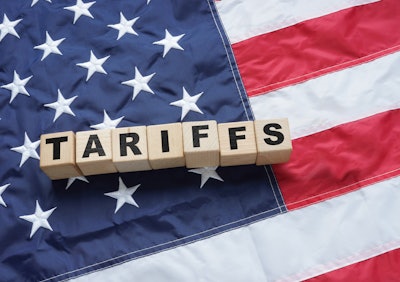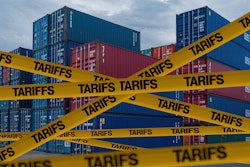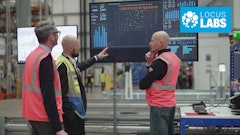
After starting 2025 in a generally solid position, the U.S. economic outlook has worsened amid sharp declines in consumer and business sentiment, rapidly rising inflation expectations, and sky-high policy uncertainty, according to the 2025 Equipment Leasing & Finance U.S. Economic Outlook, released by the Equipment Leasing & Finance Foundation.
“Extraordinarily high economic uncertainty related to U.S. trade policy has sent shockwaves through the economy, prompting large swings in financial markets and a sharp reduction in equipment finance industry confidence. At the same time, labor markets remain healthy, consumer spending bounced back in March, and the manufacturing sector appears to be holding its own. The elephant in the room is tariffs: if the administration ultimately moves forward with the 'reciprocal' tariff rates announced in early April, they will weigh heavily on the economy’s growth prospects this year. On the other hand, if bilateral or multilateral deals are struck with key trading partners and these additional tariffs are avoided, the business climate would quickly improve,” says Leigh Lytle, president of the foundation and president and CEO of the Equipment Leasing and Finance Association.
Key takeaways:
· The 2025 equipment and software investment is forecast to 2.8% (down from 4.7%) and its U.S. GDP forecast to 1.2% (down from 2.7%), indicating a higher probability of a near-term recession.
- U.S. economy: Tariffs and their related uncertainty effects are expected to weigh on the economy, with most economic forecasts predicting weak or negative GDP growth, higher inflation, and lower household disposable income this year.
- Manufacturing: The manufacturing sector has exhibited noticeable improvement in recent months. Several measures of industrial activity have strengthened, including industrial production, capacity utilization, and the ISM Purchasing Managers Index for Manufacturing. Moreover, shipments and new orders of core capital goods have been generally positive in recent months, driven by strong growth in primary metals, computers, and electronics. These readings may reflect tariff-related pull-forward activity, and it is noteworthy that new business volume is roughly flat year-to-date while industry confidence has plummeted as measured by ELFA’s Capex Finance Index and ELFF’s Monthly Confidence Index, respectively.
- Equipment and software investment: First-quarter investment in equipment and software is expected to bounce back after a poor Q4, in part due to a “pull-forward” effect as end-users attempt to front-run tariffs. However, uncertainty around trade policy and heightened concerns about the overall economic climate are expected to drag on investment growth over the next six months.
- Equipment finance industry: Higher equipment prices due to tariffs could lead more end-users to explore financing options. On balance, however, the impact of tariffs to the equipment finance industry is likely to be negative, as this issue has coincided with a sharp increase in economic uncertainty, which often results in firms delaying major investment decisions until the outlook becomes clearer. The new tariff regime is likely to result in slower economic growth and a weaker environment for equipment and software investment for the remainder of the year.
- Over the next six months, the following trends are to materialize on a year-over-year basis:
Agriculture machinery investment growth may improve modestly but is likely to remain weak overall.
Construction machinery investment growth is expected to remain negative.
Industrial equipment investment growth is likely to slow and may turn negative, but recent movement (if sustained) is encouraging.
Technology equipment and software investment should strengthen.
Transportation investment growth is likely to contract.




















